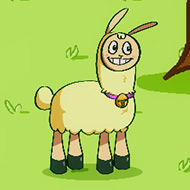
In Hungry Lamu 2, nothing is what it seems. What begins as a colorful collection adventure spirals into a slow descent through shifting realities, broken time loops, and distorted identities. Players once again control Lamu, but this time the forest responds in unfamiliar and often unsettling ways. It’s not about food anymore—it’s about uncovering who, or what, Lamu truly is.
The environments in this game are more than backdrops—they’re characters in their own right. Trees decay faster when certain fruits are gathered. Pathways change shape depending on player actions. Shadows of characters you never met appear in reflective pools, mimicking your movement. The more you interact with the world, the more you realize you’re not just influencing it—you’re being judged by it.
The most unique mechanic in Hungry Lamu 2 is the behavioral feedback loop. Lamu’s actions aren’t purely player-driven; sometimes he resists, pauses, or redirects movement. This adds a layer of unpredictability that pushes players to think about intention. The game seems to read how aggressively or passively you play—and responds in kind.
Beyond mechanics, the game monitors pacing. Spend too much time in one zone, and its visual style will begin to rot. Complete goals too quickly, and entire areas may lock themselves. The result is a game that resists being gamed. Players must adapt, slow down, and engage with the world on its own terms. There are no shortcuts here—only strange truths hidden in routine.
Hungry Lamu 2 plays like a psychological mirror. It reflects player behavior, warps space around emotional patterns, and delivers an experience that feels personal and unpredictable. What Lamu eats is less important than what the player learns while feeding him.